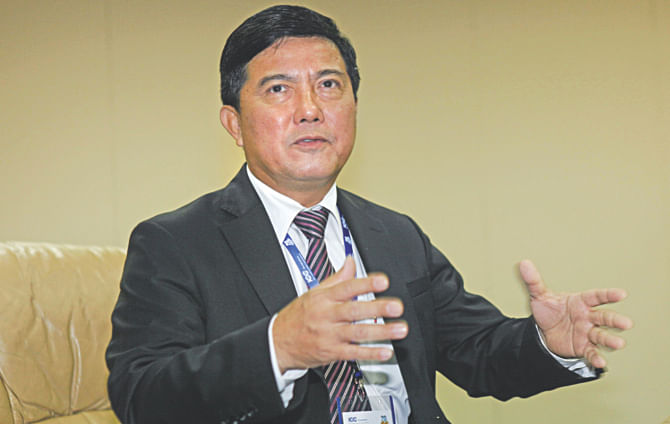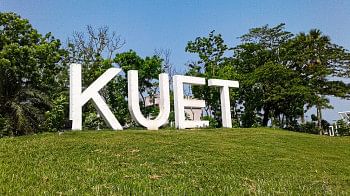Myanmar: Following Bangladesh's blueprint in garment sector

Myanmar has set out an ambitious plan to emulate Bangladesh's runaway success in the garment sector, as it looks to become one of the major apparel suppliers itself, said a minister of the Southeast Asian nation.
“In our country, the garment industry is booming. We hope we will be a hub for sourcing garment items,” said Pwint San, deputy commerce minister of Myanmar.
“We are aiming to go after RMG like Bangladesh did,” he told The Daily Star in an interview in Dhaka recently.
San was in the capital to attend a conference organised by the International Chamber of Commerce Bangladesh.
Myanmar, which is gradually opening its economy to foreign investors, is a minor player in global apparel trade as of now.
At present, it has 240 textile and apparel companies, with the number growing steadily, according to the Myanmar Garment Manufacturers Association (MGMA).
Its apparel export basket includes coats, suits, jackets, swimwear, trousers, shirts, dresses and skirts. The employment within the textile and apparel industry is around 220,000.
Apparel exports, which make up 10-12 percent of the country's total exports, raked in $1.2 billion in 2013, up from $396 million in 2009, according to the association.
MGMA though has set out an export target of $10 billion within the next ten years.
Japan is the prime destination, accounting for 48.8 percent of the country's garment exports, followed by South Korea (33.3 percent), the European Union (14.6 percent), Germany (5.4 percent) and China (2.5 percent).
San said his country sees Bangladesh as a good trading partner, and always encourages people-to-people and government-to-government contact.
The governments and private sectors are always trying to increase the trade volume between Bangladesh and Myanmar, he added. Despite being a neighbour, trade between the two countries has been very low.
Bilateral trade volume between the two countries stood at $57.24 million in fiscal 2013-14, up 9.32 percent year-on-year. Till August this year, it stood at $24.5 million, San said.
Myanmar mainly imports raw materials for construction like iron bar and cement and fertilisers from Bangladesh and exports agricultural and marine products to the country.
While the bilateral trade volume has been on the rise since 2011, San hopes it will increase in a bigger way in future, as Myanmar sees Bangladesh as a lucrative export destination.
“Bangladesh has 160 million people -- the country has a market for agriculture products. We can export food and marine items to Bangladesh.”
San said many companies from around the world as well as Bangladesh have already started to explore business opportunities in Myanmar as it is a promising land for investors.
As of August this year, Myanmar received foreign investment worth $39.3 billion. China topped the list, putting in $14.38 billion, followed by Hong Kong at $6.48 billion and Singapore $6.17 billion.
Energy and electricity supply accounted for 36 percent of the FDI, followed by oil, gas and power at 33 percent, manufacturing 7.9 percent, transport and communications 6.8 percent, according to the country's deputy commerce minister.
San, who has been with the government since March 2011, also touched upon the issue of Rohingyas.
“We are trying our best to solve the issue in a stable and peaceful way in the region. Our policy is in favour of peace and stability.”
About the proposed Bangladesh, India, China and Myanmar-Economic Corridor (BCIM-EC), San said that it will enhance collaboration in the region.
The 53-year-old minister said a government-level negotiation is going on so that Bangladeshis can find employment in Myanmar. He however could not give any details.
With a population of 60 million and area of 676,552 sq km, Myanmar's economy is one of the least developed in the world, although it has highly fertile soil and important offshore oil and gas deposits.

 For all latest news, follow The Daily Star's Google News channel.
For all latest news, follow The Daily Star's Google News channel. 



Comments